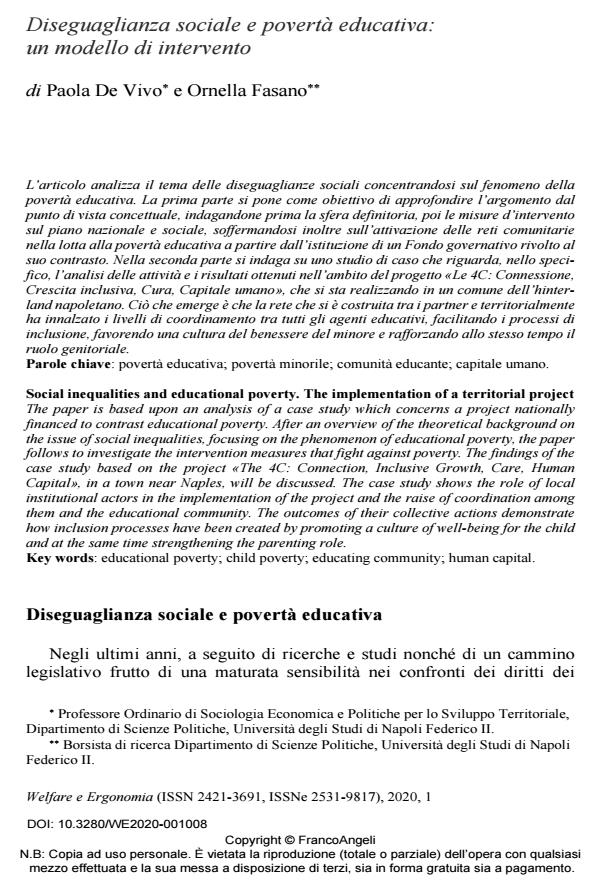Social inequalities and educational poverty. The implementation of a territorial project
Journal title WELFARE E ERGONOMIA
Author/s Paola De Vivo, Ornella Fasano
Publishing Year 2020 Issue 2020/1
Language Italian Pages 10 P. 81-90 File size 185 KB
DOI 10.3280/WE2020-001008
DOI is like a bar code for intellectual property: to have more infomation
click here
Below, you can see the article first page
If you want to buy this article in PDF format, you can do it, following the instructions to buy download credits

FrancoAngeli is member of Publishers International Linking Association, Inc (PILA), a not-for-profit association which run the CrossRef service enabling links to and from online scholarly content.
The paper is based upon an analysis of a case study which concerns a project nationally financed to contrast educational poverty. After an overview of the theoretical background on the issue of social inequalities, focusing on the phenomenon of educational poverty, the paper follows to investigate the intervention measures that fight against poverty. The findings of the case study based on the project «The 4C: Connection, Inclusive Growth, Care, Human Capital», in a town near Naples, will be discussed. The case study shows the role of local institutional actors in the implementation of the project and the raise of coordination among them and the educational community. The outcomes of their collective actions demonstrate how inclusion processes have been created by promoting a culture of well-being for the child and at the same time strengthening the parenting role.
Keywords: Educational poverty; child poverty; educating community; human capital.
Paola De Vivo, Ornella Fasano, Diseguaglianza sociale e povertà educativa: un modello di intervento in "WELFARE E ERGONOMIA" 1/2020, pp 81-90, DOI: 10.3280/WE2020-001008